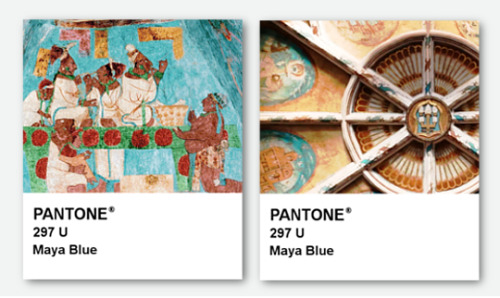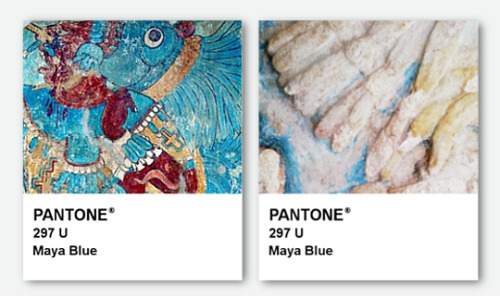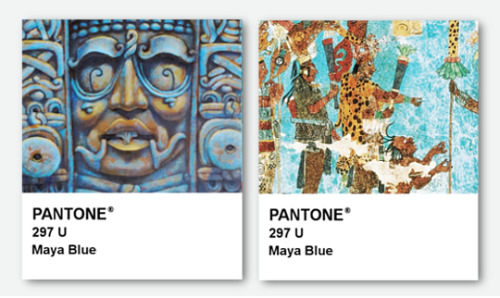HISTORY IN COLOR Maya BlueRGB: (115, 194, 251)Closest Pantone match: 297 UMaya Blue gets its nam
HISTORY IN COLOR Maya BlueRGB: (115, 194, 251)Closest Pantone match: 297 U Maya Blue gets its name due to its presence in the striking murals of Bonampak, the refined statuettes of Jaina and the imposing temples of Chichén Itzá, among other Maya archaeological sites. While it was originally believed that the color was endemic to the Yucatán Peninsula, subsequent findings have shown proof of its usage as far north as the Grand Temple of Tenochtitlan, in present-day Mexico City. The pigment is considered one of Mesoamerica’s foremost technical achievements. The impressive state of the Bonampak murals can attest its resistance to time and weather, but Maya Blue can withstand mineral acids, alkali substances, solvents, oxidants, heat and biocorrosion without any significant damage. These particular properties, as well as its widespread ritual use have made Maya Blue the subject of study from a chemical, historical and archaeological standpoint. After the brutal conquest of Mexico and centuries of colonial domination, by the twentieth century, when scientific interest in Maya Blue began to grow, the formula for its production had been lost. The closest result that contemporary research has produced to Maya Blue’s hues and properties has been based on Mexican chemist and historian Constantino Reyes-Valerio’s formula, first published in 1993: a blend of palygorskite clay and a small percentage of jiquilite or anil indigo, combined at a low heat. -- source link
#historyedit#maya blue#prehispanic#mayans#pantone edit#pantone#my edit


